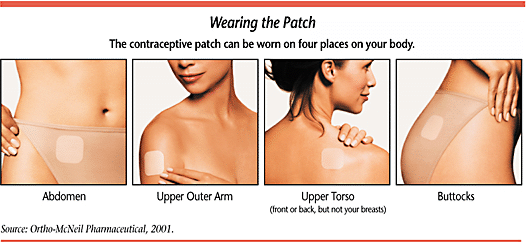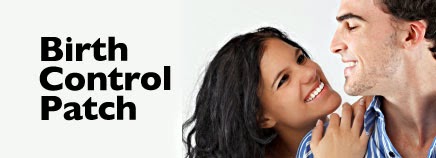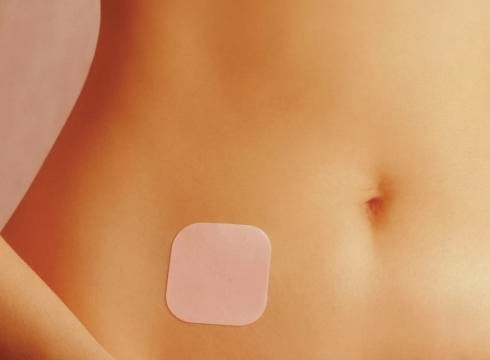Side Effects of HRT
 Hormone Replacement Therapy has some side effects. These side effects are negligible in comparison to the benefits it gives. Hence women should be encouraged to use ERT.
Hormone Replacement Therapy has some side effects. These side effects are negligible in comparison to the benefits it gives. Hence women should be encouraged to use ERT.
Does HRT have side effects similar to those of birth control pills
 The use of HRT has been complicated for menopausal women as well as for prescribing doctors by the contraindications contained in the pharmaceutical data sheets. The similarity between the data sheets for oral contraception's and HRT preparations suggest that the contraindications for the former have been uncritically accepted for the latter. This has led to the wide spread misconception that oral contraceptive and HRT preparations are similar with regard to contraindications as well as risk for side effects. Since estrogens play such an essential role in the health and well being of women, women should be en
The use of HRT has been complicated for menopausal women as well as for prescribing doctors by the contraindications contained in the pharmaceutical data sheets. The similarity between the data sheets for oral contraception's and HRT preparations suggest that the contraindications for the former have been uncritically accepted for the latter. This has led to the wide spread misconception that oral contraceptive and HRT preparations are similar with regard to contraindications as well as risk for side effects. Since estrogens play such an essential role in the health and well being of women, women should be en
couraged to use ERT so that they continue to enjoy the same quality of life they experienced before menopause.
Are there any drawbacks to HRT
Some patients complain that oral drugs sometimes aggravate menopausal problems. This could be due to metabolism in the liver and the intestine, resulting in wide fluctuations in plasma hormone levels, changes in hepatic protein synthesis and perturbations of the haemostatic system.
Administering HRT with Transdermal Drug Delivery Systems
HRT is an effective method of easing the menopausal symptoms. Administration of HRT can be oral, parenteral, rectal, vaginal, topical and transdermal. Transdermal Drug Delivery is done through application of patches containing drug to skin. Know more about this method of application.
How is HRT administered
There are various ways of administering HRT. Some of them include: oral, parenteral, rectal, vaginal, topical and transdermal (through the skin). These treatments can also be classified as oral, percutaneous and transdermal.
 What are transdermal drug delivery systems
What are transdermal drug delivery systems
Transdermal (through the skin) drug delivery system is one way of administering HRT. Other methods of administering HRT include oral, parenteral, rectal, vaginal and topical.
Transdermal applicators are the patches containing the drug. They are flat, smooth, discrete and can be used for long term medication. Transdermal delivery systems are not just an alternative route of administration but they improve the therapeutic value of a drug and provide many other advantages including increasing compliance.
Transdermal therapy could be of two types: (a) Reservoir type: Those that control the rate of drug delivery to skin; and (b) Matrix type: Those that allow the skin to control rate of drug absorption.
Why is skin the site for transdermal drug delivery
Skin is one of the most readily accessible organs of the human body. It has a thickness of only a few mm. Skin is a multi-layered organ composed of many histological layers. Its three main layers are: the epidermis, the dermis and the hypodermis.
The epidermis is further divided into 5 anatomical layers. The outermost layer is the stratum corneum which is exposed to external environment. The transdermal permeation of neutral molecules at steady state can be considered as a process of passive diffusion through the stratum corneum in the interfollicular region.
General considerations for the use of Transdermal Drug Delivery systems
The site selected for application should be clean dry and hairless e.g. estradiol patches are applied to buttocks or abdomen, nitroglycerine patches are applied to chest. Scopolamine behind ear. Because of possible occurrence of skin irritation, sites of application for patches are rotated weekly.
Transdermal patch should not be applied to skin that is already irritated or act so as to ensure maximum absorption.
Patches should be removed from its protective package being careful not to tear or damage patch. Protective backing should be removed to expose the adhesive layer and it should be applied firmly with the palm of the hand until it is secured in place.
Patches may be left on when bathing or swimming. If the patch gets dislodged one must re-apply it or it may be replaced.
Benefits and Drawbacks of Transdermal Drug Delivery Systems
Transdermal Drug Delivery systems are the easiest way of ERT. There are some discomforts associated with this but its advantages outweigh the discomforts. Know about this in detail.
Possible discomforts of Transdermal Drug Delivery systems
Transdermal drug delivery systems could be unsuitable for drugs that irritate or sensitize skin.
The natural limits of drug entry imposed by the skin's permeability indicates that relatively potent drugs are suitable only for transdermal delivery.
Under various environmental conditions, adhesions of the system to different skin types sometimes result in technical difficulties.
Advantages of Transdermal Drug Delivery systems
Avoids gastrointestinal tract difficulties during absorption caused by enzymes, drug interactions with food, etc.
Suitable in instances like vomiting/diarrhoea where oral route is not desirable.
Avoids first pass i.e. the initial passage of a drug substance through the systemic and portal circulation.
Provides the capacity for multi day therapy with a single application thereby improving patient compliance. Extends the activity of drugs having short half - life through the reservoir of drug present in the delivery system and its controlled release characteristics.
Therapy can be quickly terminated by removal of the patch from the skin.
Provides ease of rapid identification of medication in emergencies - non-responsive patients, unconscious or comatose patients.
Less chances of over or under dosing as the result of prolonged preprogrammed delivery of drug at the required therapeutic rate.
What is ETS
ETS is a new transdermal hormone replacement therapy that is supposed to be convenient, safe, low dosage estrogen therapy. It is a once-a-week dosage with a matrix patch, and offers various benefits over the existing treatments:
Physiological low dose hormone
Avoids hepatic first pass
Convenient once a week treatment
Prevents and manages post-menopausal symptoms - early symptoms like depression, anxiety, vaginal dryness, osteoporosis and cardiovascular diseases.
 Hormone Replacement Therapy has some side effects. These side effects are negligible in comparison to the benefits it gives. Hence women should be encouraged to use ERT.
Hormone Replacement Therapy has some side effects. These side effects are negligible in comparison to the benefits it gives. Hence women should be encouraged to use ERT.Does HRT have side effects similar to those of birth control pills
 The use of HRT has been complicated for menopausal women as well as for prescribing doctors by the contraindications contained in the pharmaceutical data sheets. The similarity between the data sheets for oral contraception's and HRT preparations suggest that the contraindications for the former have been uncritically accepted for the latter. This has led to the wide spread misconception that oral contraceptive and HRT preparations are similar with regard to contraindications as well as risk for side effects. Since estrogens play such an essential role in the health and well being of women, women should be en
The use of HRT has been complicated for menopausal women as well as for prescribing doctors by the contraindications contained in the pharmaceutical data sheets. The similarity between the data sheets for oral contraception's and HRT preparations suggest that the contraindications for the former have been uncritically accepted for the latter. This has led to the wide spread misconception that oral contraceptive and HRT preparations are similar with regard to contraindications as well as risk for side effects. Since estrogens play such an essential role in the health and well being of women, women should be enAre there any drawbacks to HRT
Some patients complain that oral drugs sometimes aggravate menopausal problems. This could be due to metabolism in the liver and the intestine, resulting in wide fluctuations in plasma hormone levels, changes in hepatic protein synthesis and perturbations of the haemostatic system.
Administering HRT with Transdermal Drug Delivery Systems
HRT is an effective method of easing the menopausal symptoms. Administration of HRT can be oral, parenteral, rectal, vaginal, topical and transdermal. Transdermal Drug Delivery is done through application of patches containing drug to skin. Know more about this method of application.
How is HRT administered
There are various ways of administering HRT. Some of them include: oral, parenteral, rectal, vaginal, topical and transdermal (through the skin). These treatments can also be classified as oral, percutaneous and transdermal.
 What are transdermal drug delivery systems
What are transdermal drug delivery systemsTransdermal (through the skin) drug delivery system is one way of administering HRT. Other methods of administering HRT include oral, parenteral, rectal, vaginal and topical.
Transdermal applicators are the patches containing the drug. They are flat, smooth, discrete and can be used for long term medication. Transdermal delivery systems are not just an alternative route of administration but they improve the therapeutic value of a drug and provide many other advantages including increasing compliance.
Transdermal therapy could be of two types: (a) Reservoir type: Those that control the rate of drug delivery to skin; and (b) Matrix type: Those that allow the skin to control rate of drug absorption.
Why is skin the site for transdermal drug delivery
Skin is one of the most readily accessible organs of the human body. It has a thickness of only a few mm. Skin is a multi-layered organ composed of many histological layers. Its three main layers are: the epidermis, the dermis and the hypodermis.
The epidermis is further divided into 5 anatomical layers. The outermost layer is the stratum corneum which is exposed to external environment. The transdermal permeation of neutral molecules at steady state can be considered as a process of passive diffusion through the stratum corneum in the interfollicular region.
General considerations for the use of Transdermal Drug Delivery systems
The site selected for application should be clean dry and hairless e.g. estradiol patches are applied to buttocks or abdomen, nitroglycerine patches are applied to chest. Scopolamine behind ear. Because of possible occurrence of skin irritation, sites of application for patches are rotated weekly.
Transdermal patch should not be applied to skin that is already irritated or act so as to ensure maximum absorption.
Patches should be removed from its protective package being careful not to tear or damage patch. Protective backing should be removed to expose the adhesive layer and it should be applied firmly with the palm of the hand until it is secured in place.
Patches may be left on when bathing or swimming. If the patch gets dislodged one must re-apply it or it may be replaced.
Benefits and Drawbacks of Transdermal Drug Delivery Systems
Transdermal Drug Delivery systems are the easiest way of ERT. There are some discomforts associated with this but its advantages outweigh the discomforts. Know about this in detail.
Possible discomforts of Transdermal Drug Delivery systems
Transdermal drug delivery systems could be unsuitable for drugs that irritate or sensitize skin.
The natural limits of drug entry imposed by the skin's permeability indicates that relatively potent drugs are suitable only for transdermal delivery.
Under various environmental conditions, adhesions of the system to different skin types sometimes result in technical difficulties.
Advantages of Transdermal Drug Delivery systems
Avoids gastrointestinal tract difficulties during absorption caused by enzymes, drug interactions with food, etc.
Suitable in instances like vomiting/diarrhoea where oral route is not desirable.
Avoids first pass i.e. the initial passage of a drug substance through the systemic and portal circulation.
Provides the capacity for multi day therapy with a single application thereby improving patient compliance. Extends the activity of drugs having short half - life through the reservoir of drug present in the delivery system and its controlled release characteristics.
Therapy can be quickly terminated by removal of the patch from the skin.
Provides ease of rapid identification of medication in emergencies - non-responsive patients, unconscious or comatose patients.
Less chances of over or under dosing as the result of prolonged preprogrammed delivery of drug at the required therapeutic rate.
What is ETS
ETS is a new transdermal hormone replacement therapy that is supposed to be convenient, safe, low dosage estrogen therapy. It is a once-a-week dosage with a matrix patch, and offers various benefits over the existing treatments:
Physiological low dose hormone
Avoids hepatic first pass
Convenient once a week treatment
Prevents and manages post-menopausal symptoms - early symptoms like depression, anxiety, vaginal dryness, osteoporosis and cardiovascular diseases.















